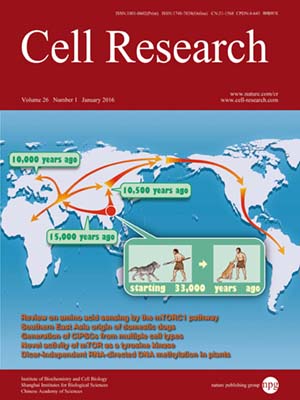
Volume 26, No 1, Jan 2016
ISSN: 1001-0602
EISSN: 1748-7838 2018
impact factor 17.848*
(Clarivate Analytics, 2019)
Volume 26 Issue 1, January 2016: 139-142
LETTERS TO THE EDITOR
Generation of macaques with sperm derived from juvenile monkey testicular xenografts
Zhen Liu1, Yan-Hong Nie1, Chen-Chen Zhang1, Yi-Jun Cai1, Yan Wang1, Hui-Ping Lu1, Yu-Zhuo Li1, Cheng Cheng1, Zi-Long Qiu1 and Qiang Sun1
1Institute of Neuroscience, Key Laboratory of Primate Neurobiology, CAS Center for Excellence in Brain Science, Shanghai Institutes for Biological Sciences, Chinese Academy of Sciences, Shanghai, 200031, China
Correspondence: Qiang Sun(qsun@ion.ac.cn)
Germ cell transplantation and testicular tissue grafting have been developed for male fertility restoration1. The testis tissue from young mammals, including mice and monkeys, is capable of undergoing complete spermatogenesis in xenografts, and sperms obtained from monkey testicular tissue xenografts have yielded monkey blastocysts after intracytoplasmic sperm injection (ICSI), although no successful production of primates has been reported2,3,4. Achieving the latter is important because of its potential implication for restoring fertility of young cancer patients undergoing radiotherapy and chemotherapy. In this study, we generated monkey offspring using sperm derived from testicular tissue xenografts of juvenile wild-type (WT) and transgenic cynomolgus monkeys (macaca fascicularis). Our results demonstrate that the testis xenografting approach could shorten the generation of cynomolgus monkey offspring by 1-2 years. Thus, the testis xenografting method may facilitate the development of genetically modified macaque monkey models and could serve as a new strategy for human fertility restoration.
10.1038/cr.2015.112
FULL TEXT | PDF
Browse 3035


